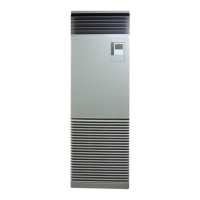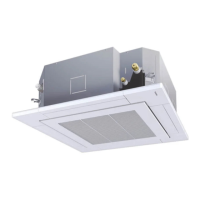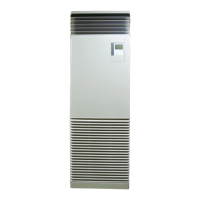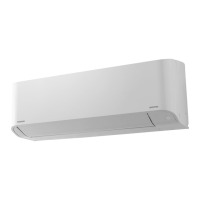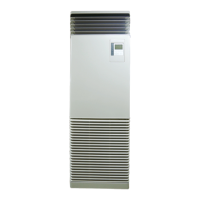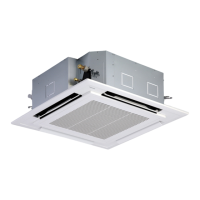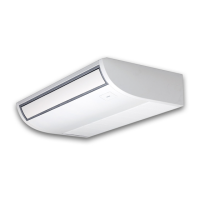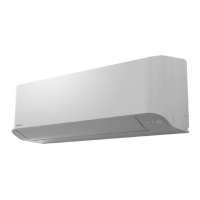70
Refrigerant pipe installation
Vacuuming
Leak position check
If a pressure drop is detected, check for leakage at connecting points. Locate the leakage by listening,
feeling, using foaming agent, etc. - then rebraze or retighten.
Air purge
The air purge must be completed before supplying power to ensure the Multi Controller’s PMVs are
open.
Using a vacuum pump, complete an air purge. Never use refrigerant gas.
• After the airtight test, discharge the nitrogen gas.
• Connect a gauge manifold to the service port at discharge gas, liquid and suction gas sides, and
connect a vacuum pump as shown.
• Be sure to vacuum at discharge gas, liquid and suction gas sides.
Low
pressure
gauge
High
pressure
gauge
Packed valve fully closed
(gas suction side)
Inverter outdoor unit
Gauge
manifold
Brazed
Service port
Vacuum pump
Service port
Flare
connection
Flare
connection
Packed valve fully
closed (liquid side)
Packed valve fully closed
(gas discharge side)
• Use a vacuum pump with high vacuum carry-over degree (-0.013 x 10
5
Pa; 0.750 mm Hg or less) and
large displacement (40 l/min. or more).
• Ensure to create a vacuum at -0.013 x 10
5
Pa (0.75 mm Hg) at the discharge gas, liquid and suction
gas.
• After the procedure has been completed, replace the vacuum pump with a refrigerant bottle and add
the refrigerant if required.
Detailed drawing of packed valve
Service port at gas
discharge side
Service port at
liquid side
Service port at
gas suction side
To
manifold

